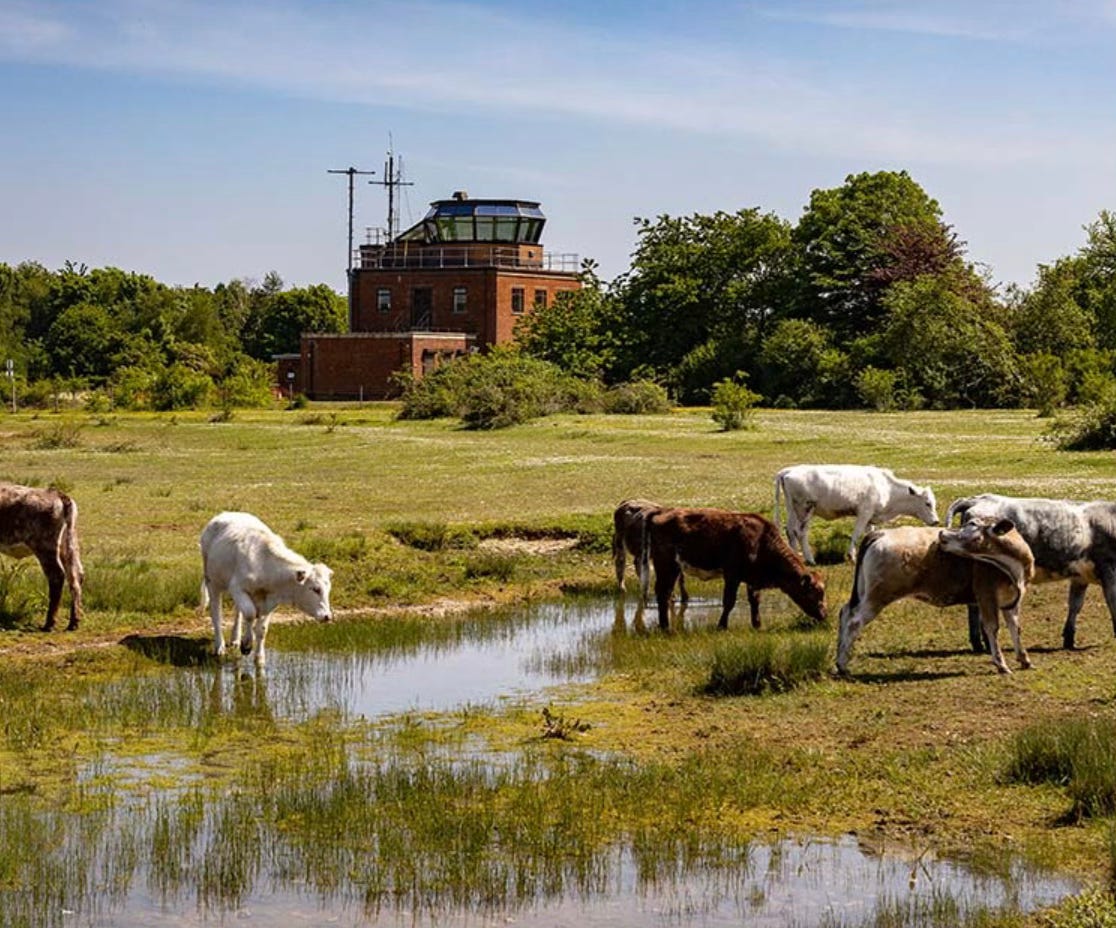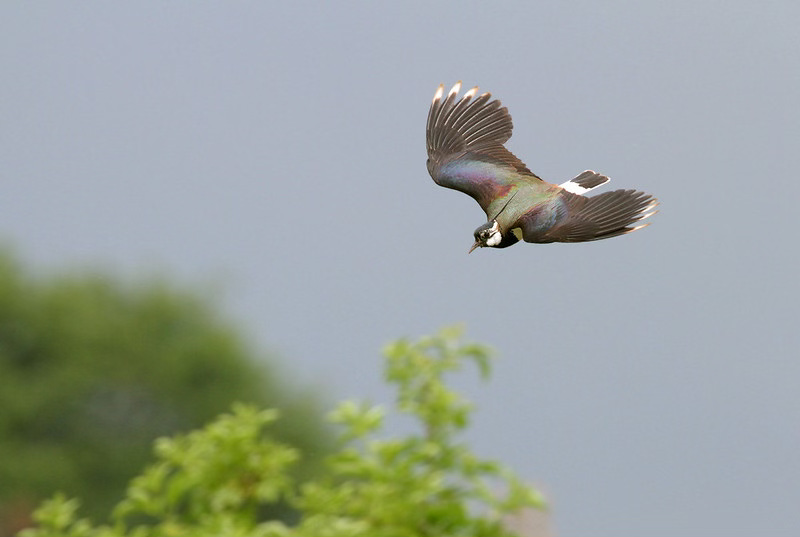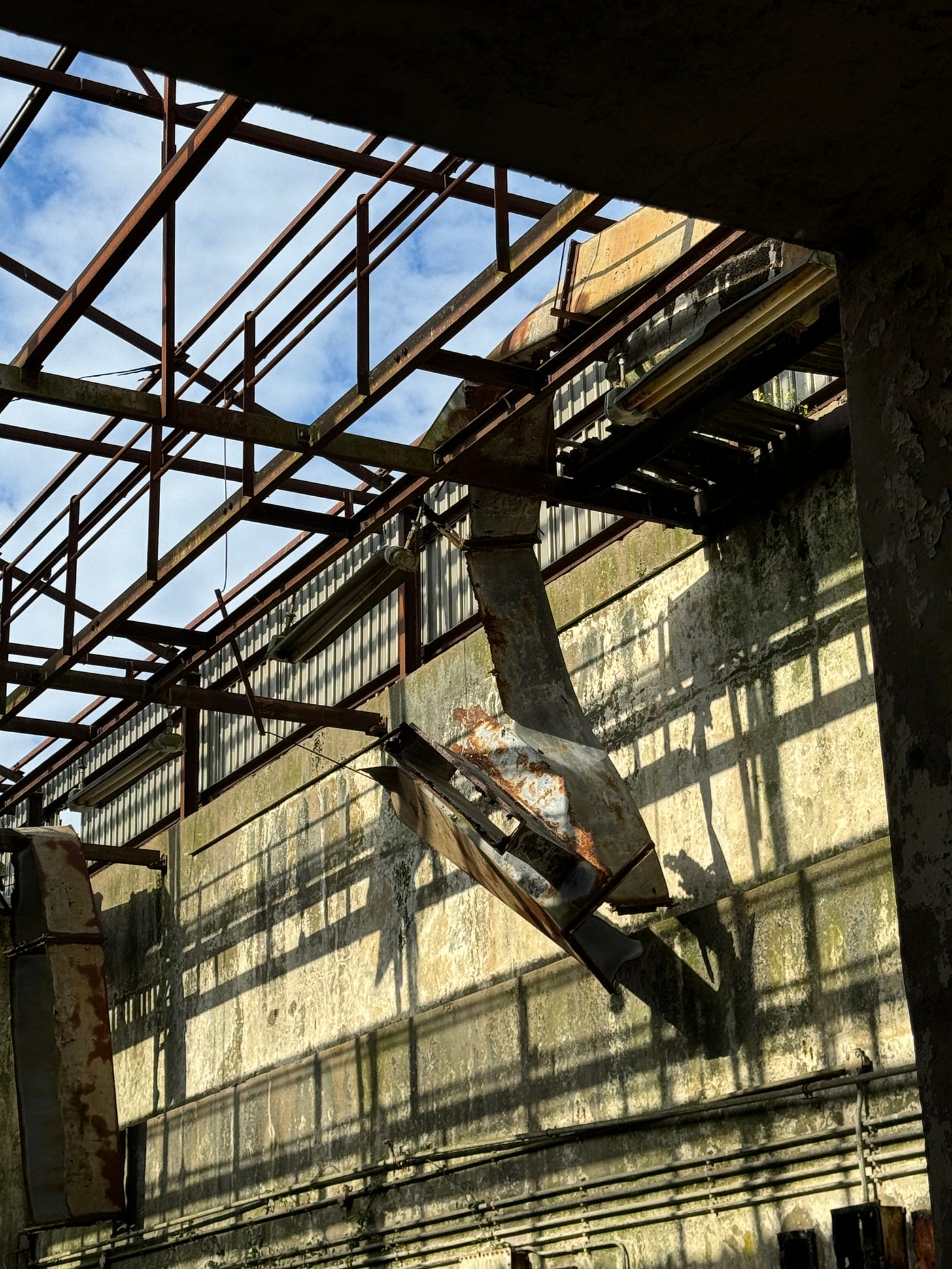Happiness is a post-apocalyptic landscape
How to find contentment in the not so green and pleasant parts of England
I have always been fascinated by abandoned places.
But until recently if you’d have asked me why, I could not have told you.
There aren’t many on our small crowded island but somehow I would always manage to be drawn to them, or they to me.
Of course there were a lot more of them when I was growing up in the 70s in suburban London, scrubby corners, yet to be tidied up and built upon.
‘Brownfield sites’ they would be called now but then they were just places to hang out with your chums.
Later in adulthood I discovered that some of the best ‘places to hang out’ had been the most dangerous and militarised in the past.
In the 80s Greenham Common was one of the hot spots of the Cold War world. I knew girlfriends at uni that joined up with the Women’s Peace Camp there at weekends.
It was only in the early 21st century that I actually went to the place, when that party was well and truly over.
I was looking for somewhere to take my son for a Sunday walk. We drove out from the family home in west London, turned off the M4 at Newbury and parked up near what looked like the old control tower.
That was pretty much the only thing that was recognisable from the newsreel footage from the 80s.
We wandered across an area of broken-up concrete that must have been the runway for the American B52s.
Clumps of gorse and blackthorn bramble had sprouted up randomly. Round the perimeter were the disused bunkers that had housed the cruise missiles.
Relaxing into the abandoned vibe of the place, at that moment we were dive-bombed ourselves by iridescent birds with a strange call.
I thought: “That’s kind of ironic in a place that played host to literal bombers 40 years ago”.
My son reliably informed me they were lapwing.
My first question was: ‘How do you know that?’.
The second was: ‘Why are they being so aggressive towards us?’.
The answer to the first question was that he had been observing birds in the garden for years. I had never even noticed.
As for the second, according to him, these were the parents and we had strayed too close to their ground nesting chicks. He went on to inform me that lapwing used to be common in the countryside but were getting increasingly scarce.
I later learned that it was of some significance that this increasingly rare bird was to be found in this abandoned military site.
What I thought was just untidy scrub pushing through the concrete was in fact a scarce and valuable habitat where the birds felt safe enough to build a nest and lay eggs.
A Suffolk dystopia
Another Cold War spot that had intrigued me back then was Orford Ness, a dystopian landscape on a cut-off spit of land off the Suffolk coast.
From the Second World War onwards hundreds of boffins had developed radar and all manner of secret weaponry there. The disused bunkers that had housed the test sites were dotted across the island like decaying prehistoric tumuli.
As at Greenham Common, the Ministry of Defence had long since departed. On paper it had been handed to the National Trust but as far as I could see, nature was the more grateful recipient.
I was still pretty ignorant about wildlife but from the top of the abandoned light-house I could recognise hares racing for the margins and birds of prey patrolling up and down looking for their dinner.
There’s nothing like a good exclusion zone
I didn’t realise that there were places like this all around the world until I picked up a copy of Cal Flynn’s ‘Islands of Abandonment’ in a bookshop some years later.
She tells first hand stories about places like Chernobyl where all manner of species have adapted to their still radio-active surroundings and in some cases even thrived.
Thanks to her inspiration I returned to places like Greenham Common and Orford Ness. I now knew a thing or two about nature and could see the world through different eyes.
‘Life in the post-human landscape’ is the sub-title of her book and it was only then that I realised what had drawn me to these places all along.
What I had read about and what I had seen with my own eyes was what happens when humans depart stage left.
We leave places in peace that we have trashed with the most destructive of our excesses like nuclear contamination, live shells and oil spills. Then the natural world reclaims its rightful place.
And it does so remarkably quickly. Like a punch-drunk boxer it takes all we can throw at her and asks: “Is that the best you can do?”.
It was a perverse thought but the fact that this is what will happen if we succeed in driving ourselves extinct as a species is bizarrely comforting.
If you want to come to terms with the fleeting presence of humans on this earth, just pay a visit to those sites we have tried our best to literally wipe off the face of the earth.
And that’s one another reason why I’m an accidental re-wilder.
If I can witness places where life returns with little or no help from us then I can die a happy man.
And if I can do my bit to speed up that process with my know-how, time and money in my remaining years, then I will be even happier.




